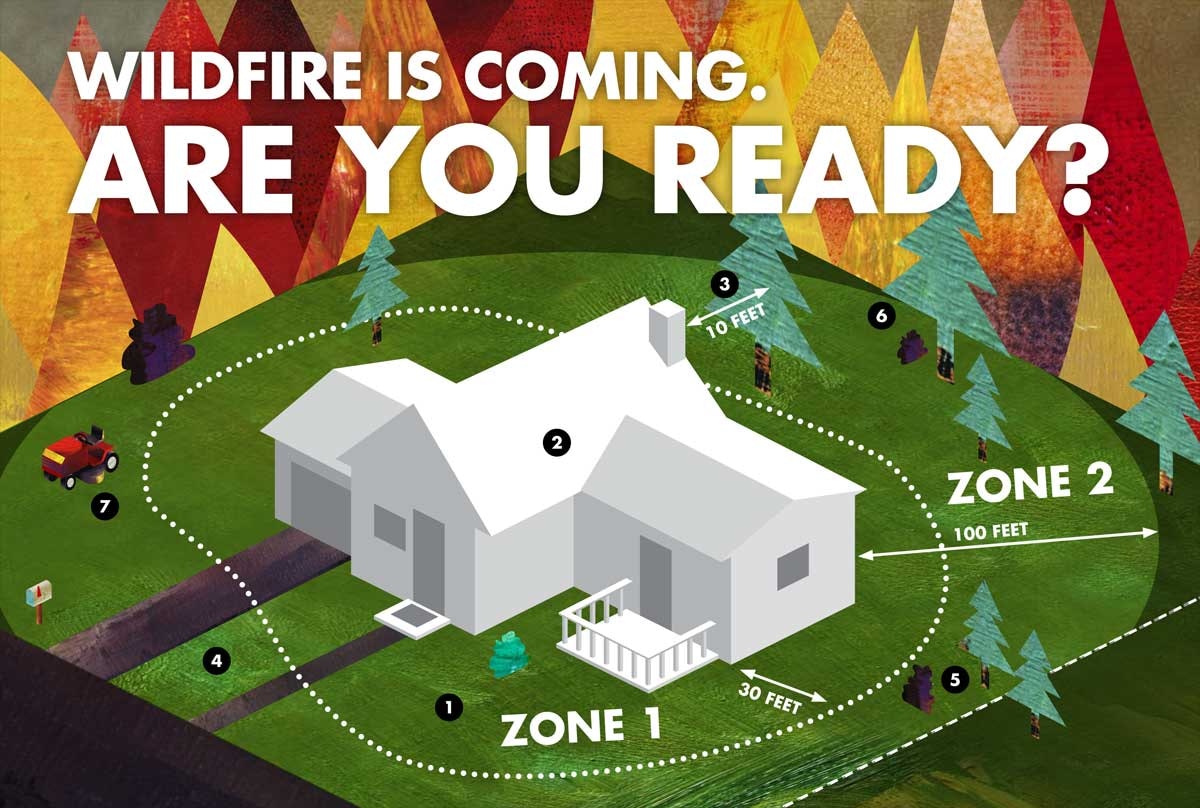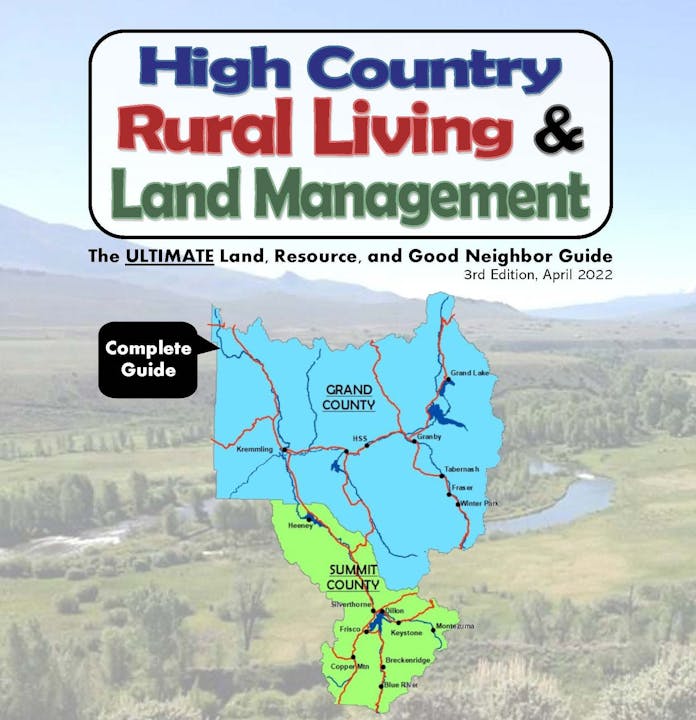Intro

Purpose of this Guide
More than 80 percent of wildfires are caused by humans, so each of us plays a role in preventing a wildfire. It’s important to be aware of and abide by current fire restrictions. It's also important to understand wildfire prevention strategies related to camping, campfires, driving, outdoor equipment use, smoking, shooting and more.
We need to make the pledge to engage with wildfire prevention preparedness, mitigation, and survival.
Grand County Wildfire Council
The Grand County Wildfire Council (GCWC) is a non-profit, community-based educational, outreach and action-based program for the residents and visitors of Grand County, Colorado. GCWC consists of members from local, state, and federal government agencies, all of our local fire departments, homeowner groups, local businesses, and concerned citizens. GCWC’s mission is “Through collaboration, education and action, engage in wildfire prevention, preparedness, mitigation, and survival.”
- Community Chipping Days
- Hazardous Fuels Reduction Cost-Share Reimbursement Programs
- 9-1-1 Reflective Address Signs
- Education, outreach, and advocacy on wildfire prevention, preparedness, mitigation, and survival
- Homeowner risk assessment planning assistance
Summit County Wildfire Council
The Summit County Wildfire Council works to mitigate wildfire risk in Summit County, through implementation of the Summit County Community Wildfire Protection Plan (pdf). The council also administers community wildfire grants and the annual chipping program that help residents and property owners reduce wildfire risk.
Intro
Each year, wildfires consume hundreds of homes in the Wildland-Urban Interface (WUI) despite firefighters’ best efforts. Studies show that as many as 80 percent of homes lost to wildland fires could have been saved if their owners had followed simple fire-safe practices. In addition, wildfire-related deaths often occur because people wait too long to leave their homes.
The Wildland-Urban Interface (WUI) is the area where human-made structures and developments meet and intermingle with undeveloped lands and vegetative fuels. The exact boundaries of the WUI depend on the topography, vegetative fuel types, local weather conditions, and prevailing winds. Nevertheless, if your home is within one mile of a natural area, it is likely within the Ember Zone (the zone where wind-driven embers, or firebrands, can threaten your home). You must prepare your home well before a wildland fire occurs. Ember fires can destroy homes and neighborhoods far from the actual flame front. Firebrands can also cause ignitions well after the fire has passed through a community.
It is not a question of if, but when, the next major wildland fire will occur. The tips below are designed to increase awareness and create a safer environment for you, your family, and the responding firefighters.
Grand and Summit County Wildfire Councils are here to help landowners mitigate for wildfire.

References
- Summit County Wildfire Council. https://summitcountyco.gov/907/Wildfire-Council

